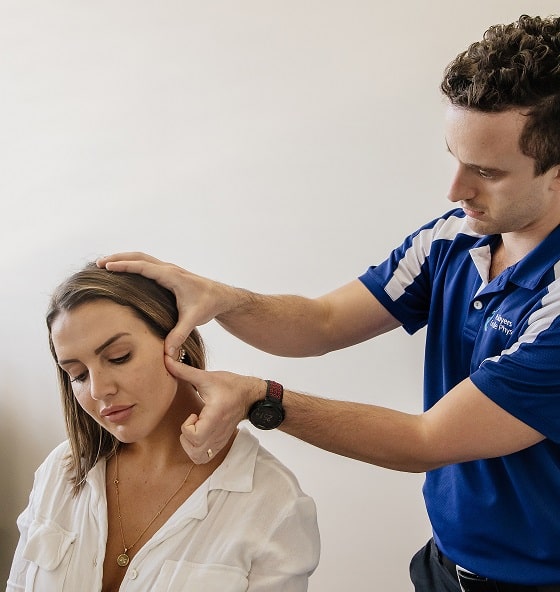The benefits of physiotherapy management in treating TMJ myalgia
By Graceville Physiotherapist Joni Levine
Physiotherapy can play a great role in treating any form of TMJ myalgia, whether it be clenching or grinding. Amongst many others, I have highlighted two studies that show the benefits of physiotherapy to treat these conditions:
1) Gomes et al 2014
This study assessed 28 patients with TMJ myalgia and split the participants into two interventional groups: one group received soft tissue massage for 12 sessions over 4 weeks of their masticatory muscles, whereas another group received an occlusal splint to wear for four weeks. Another group of 14 asymptomatic patients received no intervention, but was used as a comparison.
The study showed that both the massage and the splinting group gained statistically significant benefits in TMJ opening (marked as MMO) and lateral deviation (marked as RLE and LLE) movement after four weeks as shows:

The limitations from this study are that there was no comparison to a symptomatic control or placebo group. It would also be interesting to determine if combining splinting and hands-on treatment can have greater effects, which we often see clinically. The study did not comment if splinting had greater outcomes versus massage techniques. It would also be good to assess long-term outcomes of these patients beyond four weeks, as we know TMJ myalgia can be chronic. Finally, the authors did not assess pain and this would have been a good outcome measure to assess.
2) Rezaie et al 2022
This study assessed 30 patients with TMJ myalgia and split the participants into two interventional groups who both received 10 physiotherapy sessions over 8 weeks: one group received hands-on treatment just to the jaw (control group) whilst the other group received hands-on treatment to the jaw and neck (intervention group). The authors found that the group who received treatment to the neck in addition to the jaw experienced more pain relief (marked as VAS) and jaw opening (marked as MMO) versus the group who only received treatment to the jaw:

A few things to note from this study: firstly, there was not a group who received no treatment. Both groups were not able to maintain pain and TMJ opening improvements at 4 weeks follow-up post-intervention, which shows that patients with TMJ myalgia will need exercises to do at home to help maintain their improvements (+/- additional physiotherapy appointments).
This study mirrors our treatment approach to TMJ myalgia – we often treat the neck as there are many muscles and nerves that correlate with the TMJ. We also give patients several exercises to relax their jaw and neck muscles, as well as postural exercises for long-term pain prevention.
If you would like access to the full PDF articles, please email me joni@painslayerphysio.com



